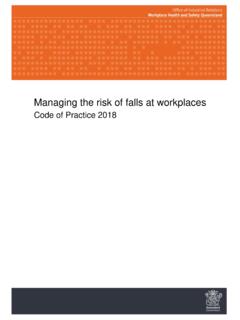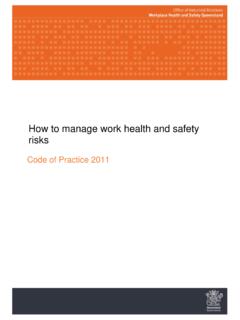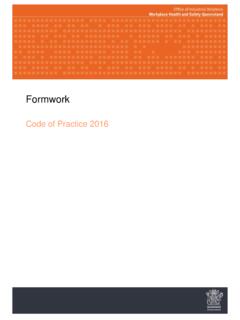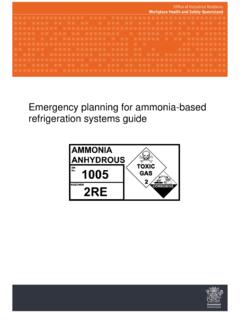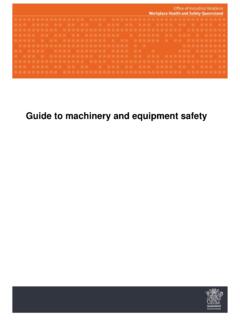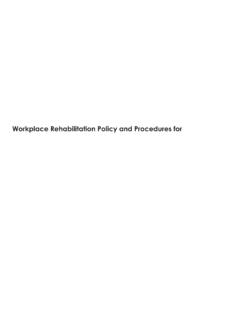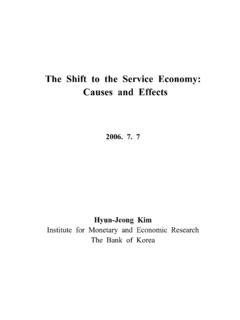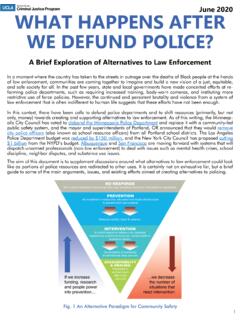Transcription of Shifting nutrition - a shift workers guide to nutrition
1 NUTRITIONS hifting A shift workers guideto nutritionWorkplace Health and Safety QueenslandWorking shifts can impact on the way you eat and the types of foods and drinks you consume. Having a healthy diet is not only important for your long-term health and preventing chronic diseases, but it is also essential for maintaining your body s day-to-day function and energy levels. This booklet provides practical information to help you to make the right choices about what you eat - helping you to shift your nutrition and ensure you are eating the right foods, at the right happens to your body when you work shifts ? Your body has a 24 hour cycle (also known as your body clock) that helps to regulate when you wake-up, your digestion, hormones and many other functions of your body.
2 This inbuilt clock is pre-programmed to respond to you being active during the day and asleep at night, so when you work shifts , your body can find it difficult to your body clock is disrupted, you may begin experiencing disturbances to your sleep, fatigue and potential health problems. However, eating healthy foods at the right time can make shift work easier by providing your body with energy when you need it, assisting you to sleep better when you rest and helping to prevent shift your nutrition habits?Poor eating habits combined with a lack of physical activity can put you at a greater risk of developing chronic diseases including type 2 diabetes, heart disease and some shows that shift workers , especially males, are at an even greater risk of developing type 2 eating well, maintaining a healthy weight and exercising regularly, you can decrease your risk, delay or even prevent the onset of type 2 diabetes.
3 Assess your risk today with a quick and free risk assessment at eating guidelinesfor shift workersEnjoy a wide variety of nutritious foods from the five food groups every to maintain a regular eating pattern, regardless of your shift : Eat every three to four hours: aim for three main meals and two to three snacks in a 24 hour period Eat according to the time of day: breakfast foods in the morning, lunch foods in the middle of the day and dinner foods in the evening Late at night, eat snacks that contain protein instead of a large meal at a time when you would normally be sleeping Eat a small meal after your shift so you don t go to bed hungry Watch your portion sizes make sure you don t healthy drinks: Drink plenty of water Limit your intake of sugary drinks, alcohol and caffeine Avoid caffeine at least 6 hours before termsexplainedProtein Protein is the body s building block for muscle, cartilage, skin and blood and helps to keep you strong and healthy.
4 Protein rich foods also help to keep you feeling fuller for longer. Foods high in protein include meat, fish, poultry, tofu, eggs, nuts and Carbohydrates are the body s primary fuel source and provide energy to the brain, muscles and other organs. Foods that contain carbohydrates include wholegrain breads, cereals, rice, pasta, noodles, most fruit and some dairy Index (GI)All carbohydrates are given a GI score. This is a measure of how quickly the body can convert the food into energy. Low GI foods are the healthiest option as they provide longer lasting energy. Low GI foods include brown rice, grain bread, pasta and most fruits and helps to keep everything you eat moving through your digestive system, keeping it healthy.
5 Foods high in fibre include wholegrain breads and cereals, fruits and When you wakeBreakfast meal to provide you with energy for your day. During your shiftLunch meal and snacks to keep you alert and energised. After your shiftDinner meal (small meal if immediately before sleeping) to help you sleep and stop you from waking due to your mealsDay shiftNight shift After your shift and before sleepingSmall breakfast to help you sleep and stop you from waking due to hunger. After your sleepLunch meal to provide you with energy for your day. Night time meal breaksEarly in your shift : small dinner meal or in your shift : a small snack every few hours to keep you alert and meals should include a balance of protein, low GI carbohydrates including fruits and vegetables.
6 See page 8 and 9 for some healthy shift work food ideas, or head to the Healthy Shopping website: small amountsOnly sometimes and in small amountsEnjoy a wide variety of nutritious foods from these five food groups every plenty of guide to Healthy EatingGrain (cereal) foods, mostly wholegrain and/or high cereal fibre varietiesVegetables and legumes/beansLean meats and poultry, fish, eggs, tofu, nuts and seeds and legumes/beansMilk, yoghurt, cheese and/or alternatives, mostly reduced fatFruitPolentaMuesliQuinoaWheat flakesMixed nutsRed kidney beansRed kidney beansRed lentilsLentilsChickpeasChickpeasPenneFet tuccineEat forgood healthThe Australian guide to Healthy Eating shows the foods we should be eating every day from each of the five food groups.
7 It also shows that certain foods should only be eaten sometimes and in small amounts. These include foods that are high in saturated fats, sugar and salt, such as junk foods , fast food and sugary healthy diet includes: Plenty of vegetables Grain foods - mostly wholegrain Lean meats and poultry, fish, eggs, tofu, nuts and seeds and legumes/beans Fruit Milk, yoghurt cheese and/or alternatives, mostly reduced exact amount of food you need to eat depends on your age, gender, height, weight and how much physical activity you do. See the Australian guide to Healthy Eating website for further information: Use small amountsOnly sometimes and in small amountsEnjoy a wide variety of nutritious foods from these five food groups every plenty of guide to Healthy EatingGrain (cereal) foods, mostly wholegrain and/or high cereal fibre varietiesVegetables and legumes/beansLean meats and poultry, fish, eggs, tofu, nuts and seeds and legumes/beansMilk, yoghurt, cheese and/or alternatives, mostly reduced fatFruitPolentaMuesliQuinoaWheat flakesMixed nutsRed kidney beansRed kidney beansRed lentilsLentilsChickpeasChickpeasPenneFet tuccine7 Don t skip meals as you are more likely to overindulge the next time you yourfood ideasBreakfast ideas.
8 Wholegrain breakfast cereals such as rolled oats, muesli, wheat biscuits or bran cereals with milk and fruit Wholegrain toast, sandwich or wrap with toppings such as baked beans, eggs, cheese and tomato, banana and honey, baby spinach and avocado Breakfast cereal drink and a piece of fruit Homemade mini quiche or vegetable ideas: Fruit fresh or pre-packaged. Try adding yoghurt, rolled oats or nuts and seeds Wholegrain crackers with a tin of tuna or baked beans Natural nut mix or air popped popcorn Vegetables sticks with dip such as avocado, hommus, tzatziki or peanut butter Fruit toast or homemade vegetable or fruit muffin Smoothie or bowl of breakfast and dinner ideas: Homemade burger or pizza with vegetable toppings Spaghetti bolognaise include grated vegetables in sauce Vegetable and bacon quiche with salad Burritos or tacos with salad Lean protein and vegetable stir fry Lean protein and vegetable casserole Frozen microwave steam fresh fish with vegetables and for energy - avoid junk foods as they will make you feel access to a fridge?
9 There are plenty of healthy options you can take with you when you don t have access to a fridge. Have a look at the meal ideas above and get creative try freezing your yoghurt and meals, putting soup or casserole into a large thermos or freezing sandwiches. Remember to store food safely keep cold foods cold by using an esky or cooler bag with a frozen ice block or frozen water bottle in does yourplate look like?Check the size of your plate. Eating from a smaller plate can trick your brain into thinking the meal is bigger than it What s for dinner poster (2015) was originally produced by NAQ nutrition and has been reproduced here with permission. Visit for more information. What s for dinner?
10 Now mix it upFill 1/2 of your plate with colourful vegetables Try stir frying, steaming, and roasting. Add vegetables to your casseroles, curries, sauces and mince 1/4 of your plate with lean protein Trim fat from meat. Choose lean mince. Chose skinless chicken. Include plant protein from legumes and 1/4 of your plate with starchy vegetables or wholegrain s inyour drink?Water is the best choice of drink. Aim to drink two litres or more a day depending on the temperature and how active you are. Try adding fresh herbs like mint or fruit such as lemon, lime or strawberries for a natural flavour. Reduced fat milk and 100% juice are also healthy choices when consumed in you drink one 600ml sugary drink every day, you will consume a whopping 22 kilograms of sugar in one year!
